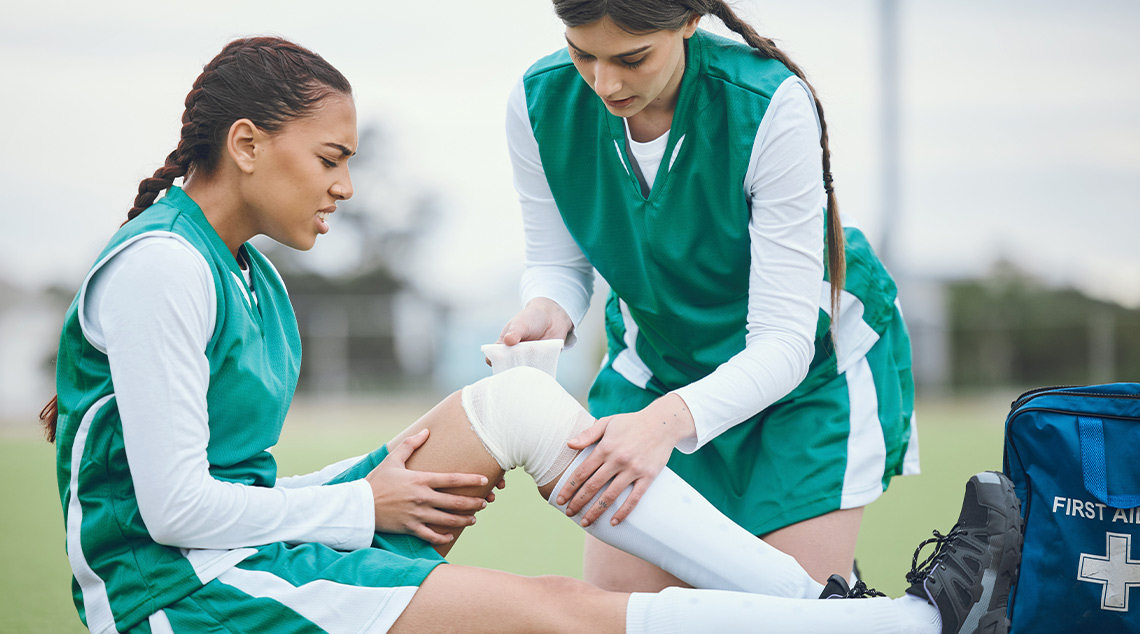This is what women should know about ACL injuries
Sam Kerr’s heartbreaking ACL injury has made her yet another athlete to fall victim to the knee trauma. So what is an ACL, and why are women more prone to ACL injuries?
When Matildas skipper Sam Kerr ruptured her anterior cruciate ligament (ACL), it not only all but ruled her out of the 2024 Summer Olympics, it raised a valid question – are more women experiencing ACL injuries these days, or does it just feel that way?
We decided to find out – here, we dig into the latest research on ACL injury risk, treatment options, and injury prevention.
What is an ACL injury?
One of a pair of ligaments, the ACL is situated in the centre of the knee joint and connects the femur (thighbone) to the tibia (shin),
It controls the motion of the knee, helping to keep the joint stable.
Activities and sports that involve jumping repeatedly, suddenly changing direction, or coming to a rapid halt after running can injure the ACL so that it tears or ruptures.
This type of knee injury can cause bleeding into the knee, as well as swelling, pain and joint “floppiness”.
Why are females more prone to an ACL injury?
According to Dr Matthew Bourne, of the Menzies Health Institute Queensland, ACL ruptures occur three to six times more frequently in female athletes than in males.
Dr Bourne, who was awarded a two-year Advance Queensland Industry Research Fellowship last year to work on a project designed to help prevent knee injuries among the state’s female athletes, says many people are unaware of how big the issue really is.
“Two in three female athletes will not return to their pre-injury levels of sport within 12 months, and about 25 per cent reinjure their ACL in that period,” Dr Bourne says.
“Compounding that, 50 to 90 per cent will develop knee osteoarthritis in the subsequent 10 to15 years, which is a leading cause of long-term disability.”
So, why are female athletes more at risk of ACL injuries?
One explanation is that, to date, much of the research into ACL tears has been male-centric, limiting the ability of coaches and practitioners to implement evidence-based approaches to both the training and rehabilitation of high-performance female athletes.
Are ACL injuries unique to professional athletes?
No. Australian Catholic University research found that while young Australians aged 15-29 had the highest incidence of ACL injuries, young girls aged 5-14 experienced the steepest rise in ACL injuries over the 20-year study period.
The researchers say the fact that more young girls are taking part in high-risk sporting activities, and the expansion of pathways for girls to participate in both grassroots and elite level sport, likely explain the high injury rates in this age group.
How are ACL injuries treated?
ACL injuries commonly require surgery to reconstruct the ligament – which Sam Kerr underwent in January – followed by a lengthy rehabilitation period.
But a new non-surgical bracing treatment that was the subject of a recent study may help people avoid this surgery in future.
Among the 80 people treated with the bracing treatment, 90 per cent had evidence of ACL healing three months after the ACL rupture occurred.
Study lead author Dr Stephanie Filbay, of the University of Melbourne Department of Physiotherapy, says it builds on her recent research that showed that 30 per cent of ACLs healed with exercise-based rehabilitation, and that facilitating ACL healing may deliver better outcomes than reconstructing the ligament.
“We are now planning a clinical trial to assess whether this new treatment results in better outcomes than ACL surgery for acute ACL rupture,” Dr Filbay says
“If the benefits of this treatment are supported by a clinical trial, this could result in a paradigm shift, whereby people aim to heal a ruptured ACL rather than reconstruct it with surgery.”
Can an ACL injury be prevented?
Some research shows that injury prevention programs can reduce both initial injury and subsequent reinjury of the ACL by at least 50 per cent, but use of these strategies in schools, communities and recreational sports is currently poor.
While research into targeted prevention programs for elite female athletes is ongoing, experts say there are strategies that may help lower the risk of ACL injury.
How to help prevent an ACL injury
Sports Medicine Australia suggests including the following strategies when active or playing sport:
- Undertaking adequate pre-season training
- Participating in training drills that require balance, power and agility
- Warming up, stretching and cooling down
- Wearing the right protective equipment
- Allowing enough recovery time between workouts or training sessions.
More on women in sport:
- Eloise Wellings’ secret to sports success after 30
- Top sports nutrition facts to fuel your best performance
- Ashleigh Brazill on kicking new goals for women’s football
- Eyes on the prize: How to tackle setbacks like an Olympian
Written by Karen Fittall.





